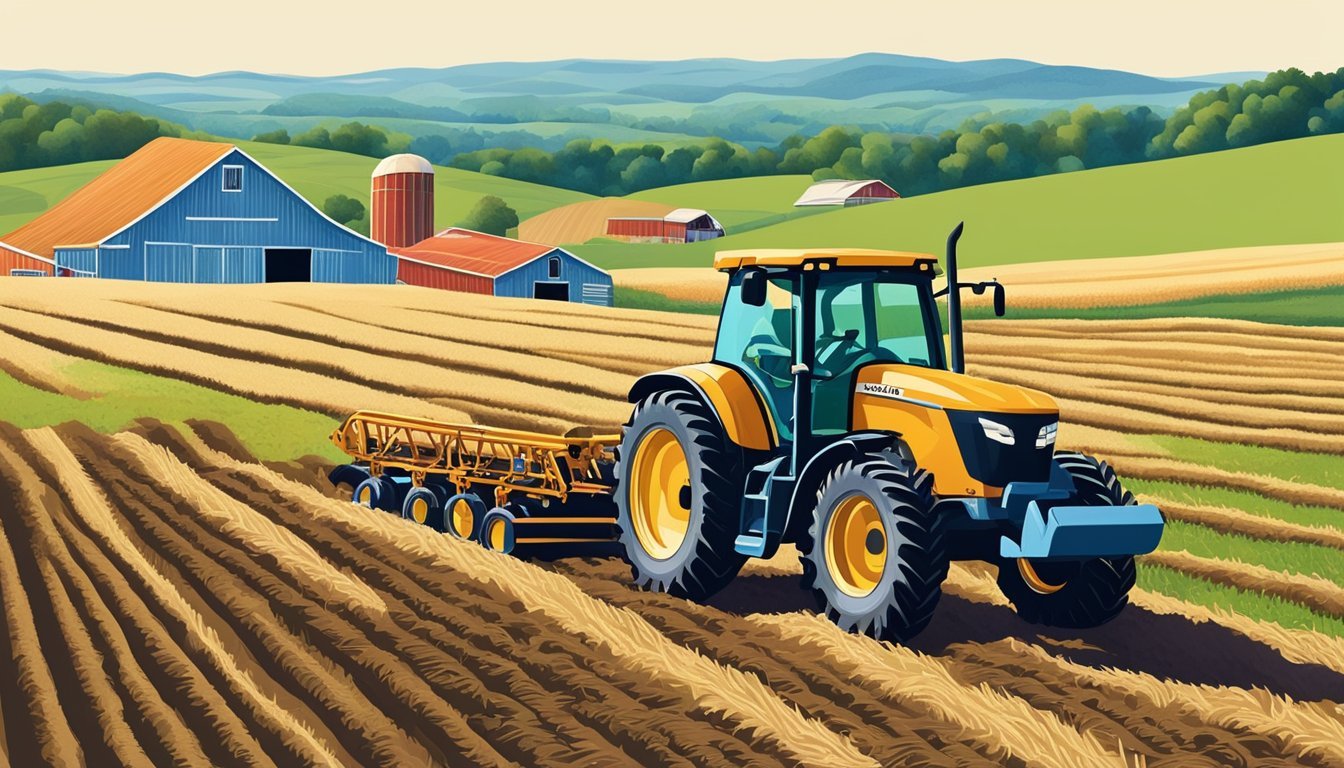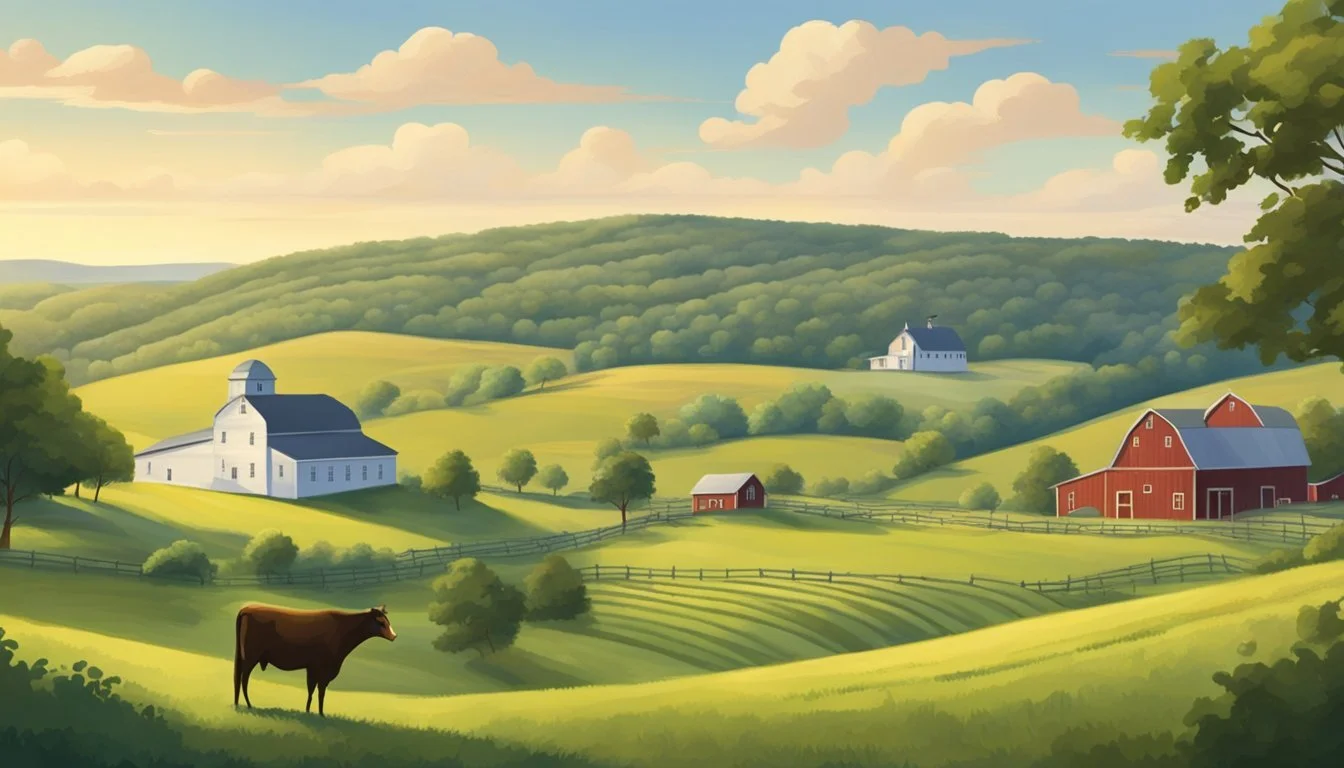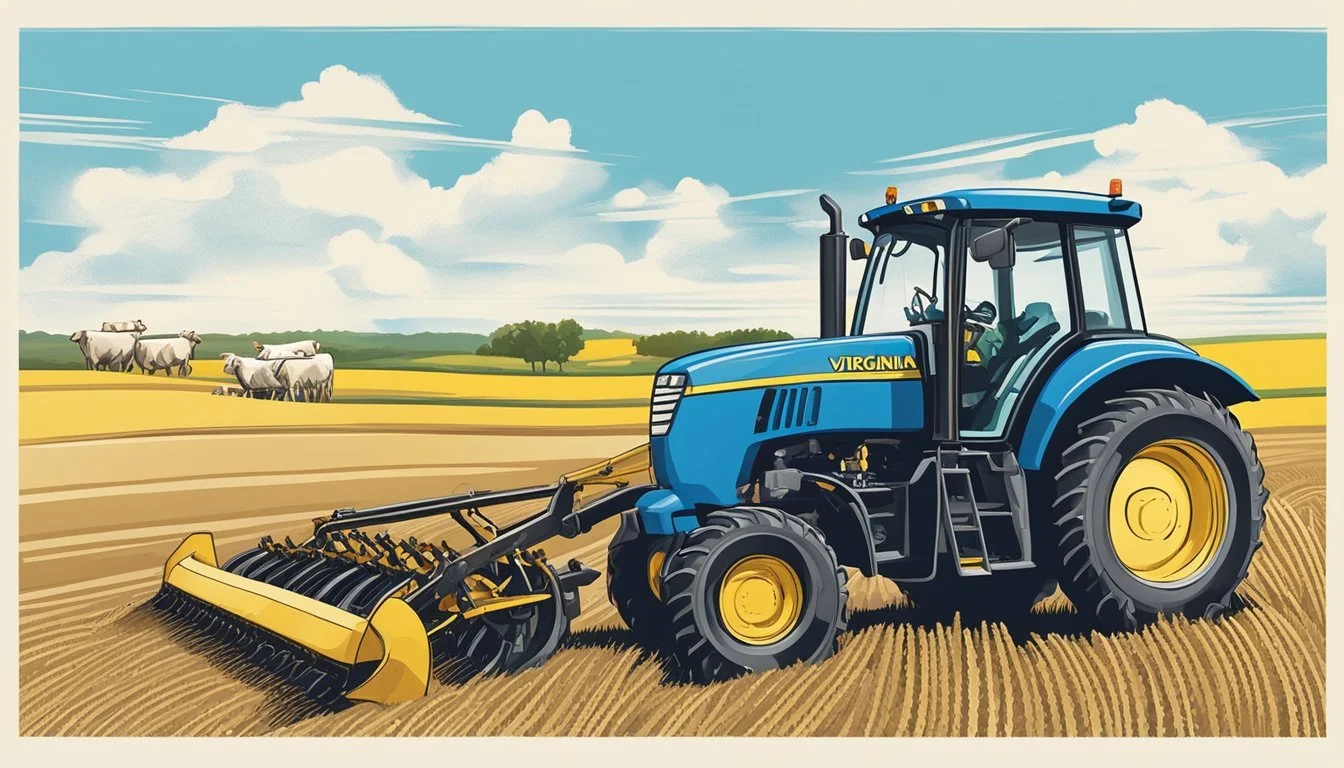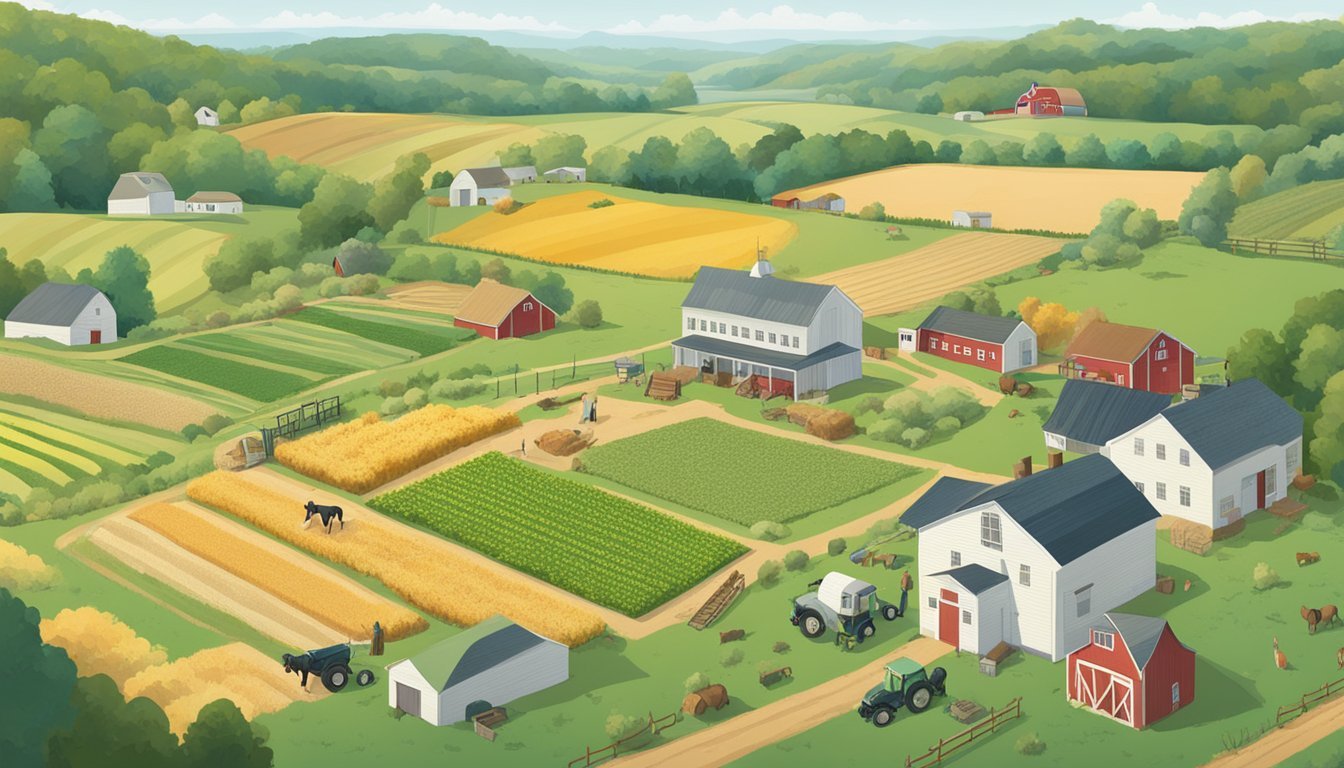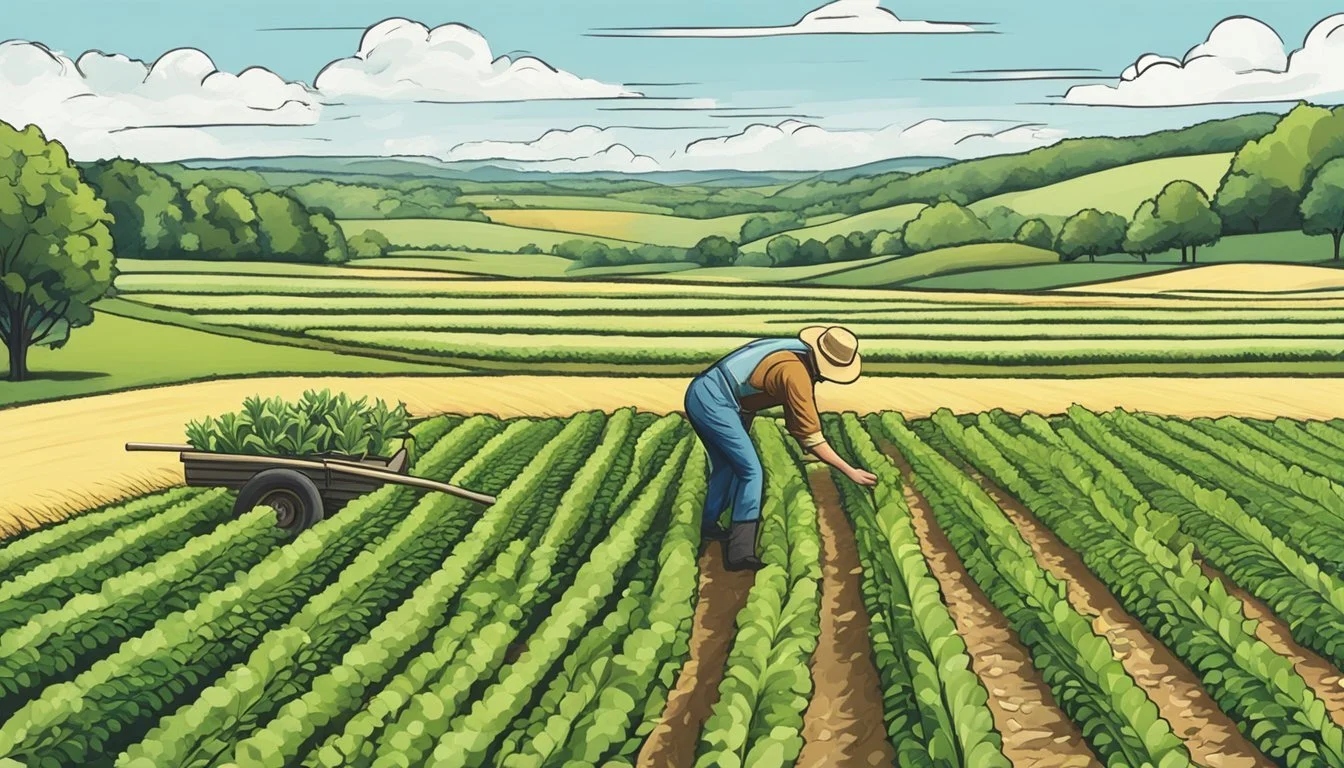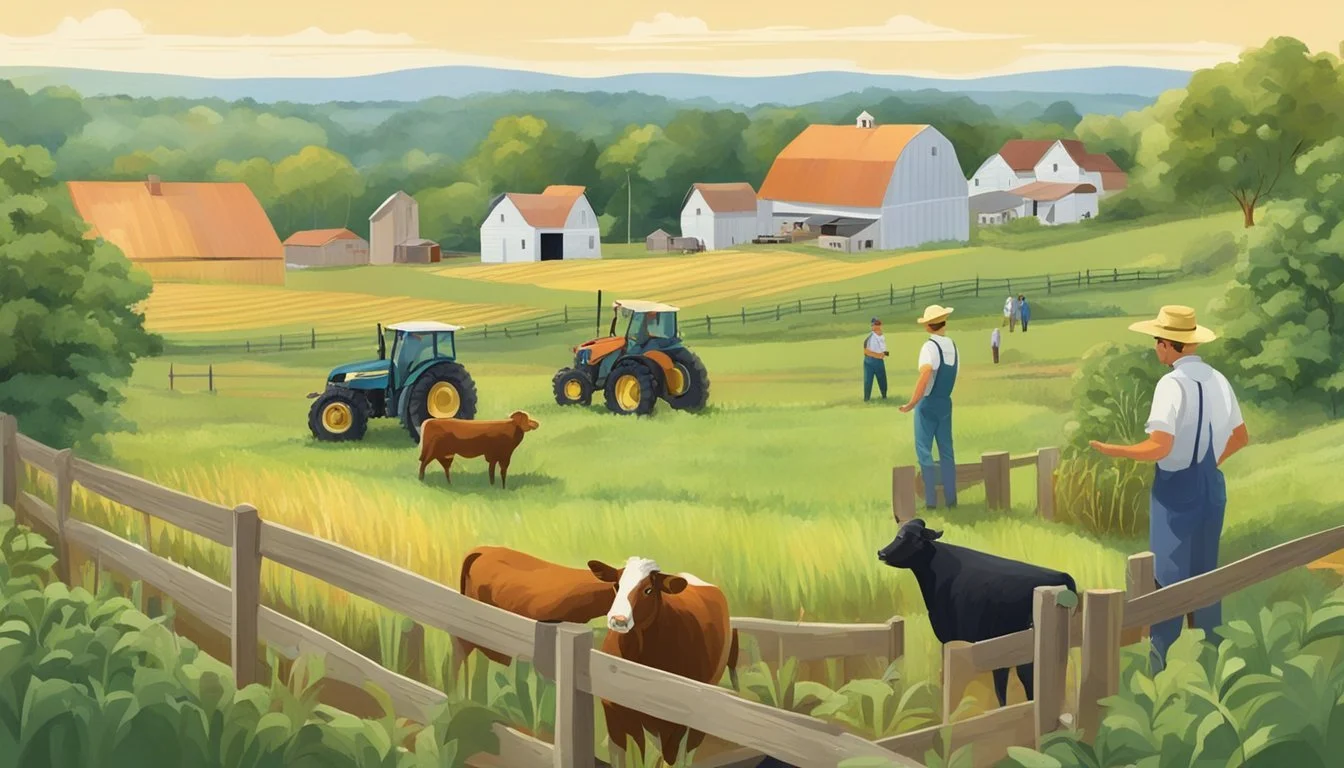Right to Farm Law in Virginia
Understanding its Impact and Provisions
The Right to Farm Law in Virginia is designed to protect agricultural operations by maintaining the rights of farmers and preventing new non-agricultural developments from classifying these activities as a nuisance. By doing so, the state acknowledges the importance of agriculture and aims to shield it from ordinances that could hamper farming practices. The law stipulates that counties, cities, or towns may not enact zoning ordinances that unreasonably limit agricultural structures or farming and forestry practices within designated agricultural districts unless the limitations contribute to the health, safety, and welfare of the public.
Delving into the specifics of the law, Section 3.2-301 of the Code of Virginia addresses how localities should approach agricultural regulations. The objective is to limit the conditions under which agricultural operations can be considered nuisances, particularly when non-farming land uses start near existing farms. This section underlines a critical balance between the rights of farmers to continue their work unaffected by new neighbors and the interests of those neighbors who may be new to living in close proximity to farming activities.
The law's implications are far-reaching for the state, where agriculture plays a vital role in the economy and cultural heritage. The Right to Farm Law reflects Virginia's commitment to support and sustain its agricultural sector by creating a legal environment that fosters stability and growth for farmers and agribusinesses. Such support is crucial in an era where urban expansion and other factors can often lead to increased pressures on farmland.
Historical Context of Right to Farm Laws
The Right to Farm laws serve as a legislative framework designed to protect farming operations against nuisance lawsuits and urban encroachment. In Virginia, the historical context of these laws reflects a response to the rapid loss of farmland and the tension between agricultural and non-agricultural land use.
Development and Evolution
Virginia's Right to Farm Law was instituted with the original legislation passed in 1981. The primary intent was to safeguard farmers from nuisance claims that could arise when non-farm land development encroaches on existing agricultural operations. Over the years, Virginia has amended its Right to Farm statutes to better address the evolving landscape of agriculture and suburban development.
1981: Virginia passes the original Right to Farm Act.
Subsequent Amendments: Adjustments are made to streamline definitions and provide clearer protections.
Comparison With Other States
Virginia's approach to Right to Farm laws shares similarities with statutes in states like West Virginia, but diverges in the specific protections and definitions provided.
Virginia: Defines agricultural operations broadly, encompassing the production of crops and animals and outlines explicit protections against nuisance lawsuits.
West Virginia: Also supports farmers through Right to Farm policies, but may differ in the nuances of the law and how it is implemented at the local level.
All states with Right to Farm laws aim to balance the interests of agricultural and non-agricultural communities while promoting the sustainability and economic viability of agriculture. However, each state customizes its legislation to address its unique agricultural contexts and challenges.
Purpose and Intent of the Right to Farm Law
The Right to Farm Law in Virginia is designed to support the viability of agriculture by securing the rights of farmers to operate and to shield them from undue legal challenges. It serves as a foundational component in promoting agricultural sustainability and food production within the state.
Protecting Agricultural Operations
Agricultural operations within Virginia are protected under the Right to Farm Law to ensure that farming activities can be conducted without unwarranted interference. This law acknowledges agriculture as a fundamental activity providing essential services, and it seeks to prevent ordinances that unfairly classify such operations as nuisances.
Minimizing Nuisance Suits
The aim to minimize nuisance suits is clear-cut; the Right to Farm Law effectively voids local ordinances that would otherwise deem agricultural operations problematic. These statutes are in place to prevent the establishment or continuance of legal actions based on farming operations being classified as nuisances, provided the farmers are adhering to appropriate laws and best management practices.
Promoting Food Production
By protecting farmers from nuisance suits and unnecessary restrictions, the Right to Farm Law indirectly promotes food production. It recognizes the critical role that agriculture plays in Virginia's economy and ensures that food production is not hindered by local ordinances potentially at odds with farming activities.
Key Provisions of the Virginia Right to Farm Act
The Virginia Right to Farm Act (RTF) provides critical guidelines and protections to support the continuity of agricultural practices. It specifies conditions under which farming activities are rendered immune from nuisance lawsuits and delineates requirements for zoning considerations.
Nuisance Protection
Under the Right to Farm Act, agricultural operations in Virginia are protected from being declared a nuisance if they comply with existing laws and regulations. This effectively means that if a farming operation exists prior to changes in land usage nearby, it cannot be deemed a nuisance due to changes in the surrounding nonagricultural land uses. The Code of Virginia specifies that no locality may adopt zoning ordinances that unreasonably limit agricultural or forestry operations unless it significantly pertains to the health, safety, or general welfare of its citizens.
Special Exception and Special Use Permit Guidelines
The RTF details that localities may not require special exceptions or special use permits for agricultural structures or practices unless there is a direct relationship with the health and safety of the public. This provision encourages the preservation of agricultural lands by minimizing excessive regulatory constraints, ensuring that farming operations can continue without undue burdens related to zoning changes or new property developments around them.
Setbacks and Area Requirements
The Act addresses setback requirements and minimum area requirements, which are significant for maintaining the practical functioning of farms. Setbacks are established to provide a buffer between agricultural operations and adjacent properties, often related to the application of sprays or chemicals, ensuring a safe distance from residential or public areas. Minimum area requirements help to protect the viability of agricultural lands by preventing piecemeal erosion of farmland through over-regulation. These guidelines are designed to safeguard farming practices while also considering the welfare of the community at large.
Definitions and Eligibility Criteria
The Virginia Right to Farm laws define key terms and establish eligibility criteria that protect agricultural and forestry operations within the state. These definitions matter in the context of zoning and nuisance claims, forming the backbone of legal protection for farmers and foresters.
Agricultural and Silviculture Activities
Virginia law characterizes agricultural operations as those dedicated to the genuine production of crops, animals, or poultry. This includes the production of fruits, vegetables, meat, dairy, and poultry products, as well as nuts. Silviculture, or forestry practices, refers to the cultivation and management of trees for timber and other forest products. Both agriculture and silviculture must be bona fide operations, suggesting they are engaged earnestly and not for any improper purpose.
Agricultural Districts and Zoning Classifications
Agricultural districts are areas designated by zoning laws for agricultural uses and practices. In Virginia, zoning ordinances that unreasonably limit farming and forestry practices in these districts are prohibited unless they can be justified by health, safety, or general welfare concerns for the community. Zoning classifications must, therefore, support and not hinder agricultural and silvicultural operations, ensuring that farms and forests can operate effectively without undue restriction.
Limitations and Exceptions to the Law
While Virginia's Right to Farm Law generally protects agricultural activities, certain limitations and exceptions are in place to address the balance between farming practices and the rights of neighboring properties, particularly concerning health, safety, and compatibility with nonagricultural land uses.
Health, Safety, and General Welfare Considerations
Zoning Ordinances: Localities in Virginia may not enact zoning ordinances that unreasonably restrict or regulate farm structures or farming and forestry practices in an agricultural district. However, these restrictions are permissible when they have a direct connection to the health, safety, and general welfare of the citizens. This means that any limitations imposed should reflect a genuine concern for these areas, rather than an arbitrary constraint on agricultural practices.
Conformity with Nonagricultural Land Uses
Nuisance Suits and Damages: Virginia's Right to Farm Law aims to protect agricultural operations from nuisance claims, particularly when nonagricultural land uses encroach upon existing farms. The law limits compensatory damages for such claims, capping them at the reduction in fair market value of the affected property. Therefore, the law tends to favor the continuation of agricultural operations over the subsequently developed nonagricultural land uses. This support is grounded in an intent to preserve farming activities that were established prior to changes in the surrounding land uses.
Legal Implications and Case Law
The Right to Farm laws in Virginia provide critical legal framework guiding agricultural practices and disputes related to nuisance claims. This section will review essential legal precedents and notable challenges that shape the understanding and enforcement of these laws.
Precedents and Interpretations
The Virginia Right to Farm Act, specifically § 3.2-301, aims to safeguard farming operations against nuisance lawsuits when nonagricultural land uses emerge near existing agricultural operations. The Act clearly states that localities are precluded from adopting ordinances that would declare agricultural operations as nuisances under these circumstances. Legal precedent set by Virginian courts has upheld this protection; they interpret the law in ways that support agricultural activities provided they are not managed negligently or improperly.
Key Provision: The law includes provisions stipulating that agricultural operations cannot be declared a nuisance after a certain period if there was no initial objection when the operation began, setting a substantial hurdle for subsequent nuisance lawsuits.
Notable Legal Challenges
The application of Right to Farm laws has led to various legal challenges. One notable case in 1985 established that lands with overgrown weeds, as long as they were part of general farming operations, were permissible and should not be considered negligently managed. This case further reinforced the principle that nuisance claims must be substantiated with clear evidence of negligence or improper management.
Lawsuits involving damages due to alleged nuisances have had to contend with Right to Farm provisions. Plaintiffs must demonstrate that the farming operation has overstepped lawful practices or has caused excessive damage or disruption to their property or livelihood. Courts tend to rule in favor of agricultural operations that comply with standard and accepted farming practices.
Impact on Farmers and Neighbors
In Virginia, Right to Farm laws establish a critical balance between agricultural practices and the interests of neighboring property owners. These laws often lead to different experiences for farmers and their non-farming neighbors, especially regarding the use of land and managing disturbances such as noise.
Farmer Experiences
Farmers in Virginia are generally safeguarded by the Right to Farm laws, which reinforce their ability to operate without the undue burden of nuisance complaints stemming from ordinary farming activities. Specifically, the legislation supports the farmers in several ways:
Protection from Nuisance Lawsuits: It ensures that standard farming operations cannot be deemed a nuisance, if in compliance with generally accepted agricultural practices, ultimately shielding farmers from certain legal challenges.
Provision for Traditional Farming: Family farms benefit from these laws, as they can maintain long-standing farming methods without being hindered by the changing landscape of rural Virginia due to development.
Farmers are expected to manage their farms without negligence and in accordance with proper farming practices. When these conditions are met, Right to Farm laws provide farmers with a sense of security and continuity for their livelihoods.
Neighboring Property Concerns
Residents of properties neighboring farms may encounter challenges related to noise, odor, and other farming-related disturbances. The Right to Farm laws in Virginia highlight the following points of concern:
Acceptance of Farming Realities: Neighbors are required to tolerate the realities of agricultural activities, which might include increased noise levels during planting and harvest seasons, or odors associated with livestock and manure management.
Potential for Disputes: Conflicts may arise when residential areas expand into traditionally agricultural regions, leading to a clash of lifestyles and the occasional dispute over noise and land use.
It is essential for neighboring property owners to be aware that the law often leans in favor of the farming community, effectively limiting the recourse for those who might find farm-related activities disruptive to their quality of life. Nevertheless, farmers and neighbors are encouraged to communicate and work collaboratively towards mutually beneficial solutions.
Agricultural Practices and Compliance
The Right to Farm laws in Virginia safeguard the practices of farmers and foresters by ensuring that agricultural activities are in compliance with zoning ordinances that promote the health, safety, and welfare of the community.
Farming and Forestry Practices
Under Virginia’s Right to Farm Law, specific provisions protect farming and forestry practices from being deemed public nuisances, allowing these operations to continue as vital parts of the state’s economy. Forestry and farming practices must adhere to established regulations that link them to the broader public interest, balancing productivity with community health and safety.
Key Regulations:
Farm structures are subject to local zoning laws.
Forestry practices should not compromise public health.
Vegetables, Aquaculture, and Processing Activities
In the realms of vegetable farming and aquaculture, Virginia's Right to Farm Act acknowledges the importance of these activities and the need for fair regulation. Processing activities related to these sectors are also protected, provided that they meet certain criteria linking them to the health, safety, and general welfare of the community.
Protected Activities Include:
Planting, growing, and harvesting vegetables.
Aquaculture operations, including but not limited to the cultivating of aquatic plants and animals.
Processing facilities associated with agricultural production.
Note: The success of farming structures and the production of vegetables and aquatic crops depend heavily on the ability to operate without unreasonable constraints, thus underlining the significance of the Right to Farm Act in maintaining a balance between agricultural operations and regulatory compliance.
Role of State and Local Governments
The State of Virginia establishes the legal framework guiding agriculture, while local governments implement zoning ordinances affecting farming practices. These regulations must balance agricultural interests with public welfare.
Zoning Ordinance Implementation
Local governments are responsible for enacting zoning ordinances, but they must do so within the confines of state law, which seeks to protect the farming industry. Zoning ordinances are local rules that dictate how land within a locality can be used, from residential to industrial to agricultural purposes. In Virginia, zoning ordinances cannot unreasonably restrict agricultural practices in designated districts. They are required to have a direct relationship to health, safety, and general welfare of the population.
Health: Ordinances may address concerns related to environmental impacts or potential hazards associated with farming operations.
Safety: Regulations could be centered on maintaining safe practices that protect both workers and the public from agricultural activities.
General welfare: This broad category ensures that zoning practices support the livelihood of the community, including both farming and non-farming residents.
Official Sources and Compilation
The government provides official sources containing legal statutes, which include detailed information on the Right to Farm laws. Compilations of these laws can be found in:
The Code of Virginia under Chapter 3, Right to Farm.
Official state legislative websites.
Documents and summaries provided by agricultural associations and legal entities within the state.
These sources are instrumental for citizens and officials alike to understand and apply the law accurately. They provide a basis for any regulations that local governments may put in place and ensure consistency with the state's legal framework.
Future Prospects and Amendments
Virginia's Right to Farm Act continually faces scrutiny and discussion, with possible amendments aimed at balancing the interests of ranchers, farmers, and neighbors within the community.
Potential Revisions
Restrictive Ordinances: The Commonwealth's statutes may see adjustments to existing restrictive ordinances to address the evolving landscape of agriculture. These revisions could potentially refine the definition of agricultural practices that qualify for protection under the act.
Expansion or Reduction of Protections: Discussions involving the legal scope may lead to expanding or reducing protections for ranchers. This particularly pertains to operations that impact adjacent landowners, considering the technological advancements and changes in farming methods.
Ongoing Debates
Impact on Non-Farm Neighbors: Virginia continues to debate the Right to Farm Act's effects on communities, particularly addressing concerns of non-farm neighbors regarding nuisances and property rights.
Legislative Balance: Lawmakers strive to ensure the act fairly supports agriculture while considering the rights and quality of life for residents in rapidly growing rural areas. The balance sought through potential amendments to the Act reflects a neutral stand in ongoing debates, avoiding tipping the scale unfavorably towards any involved party.

